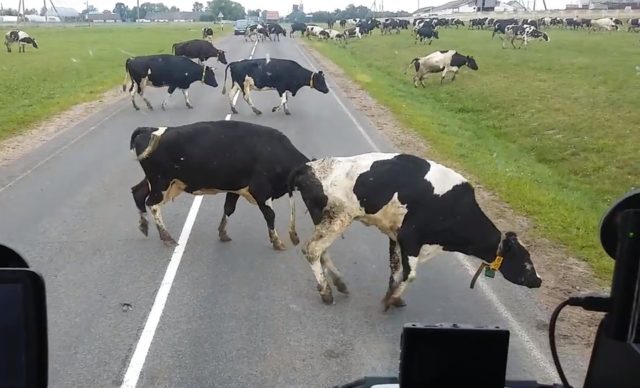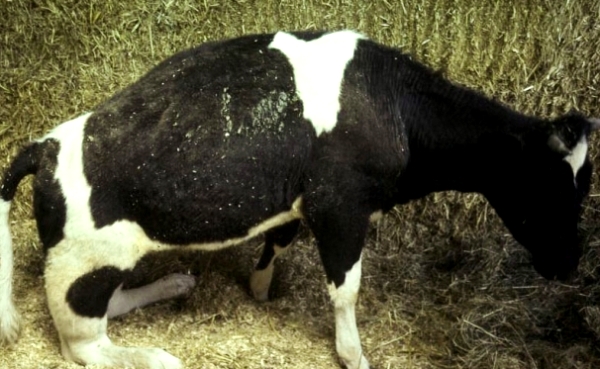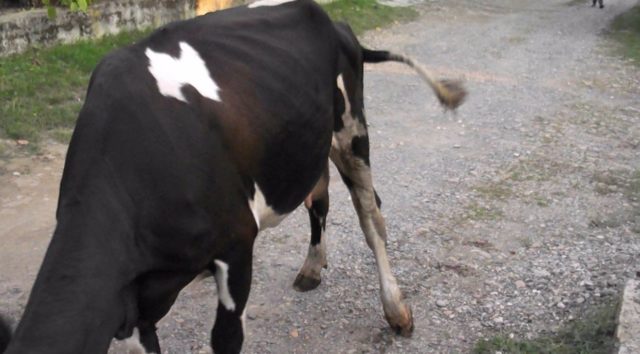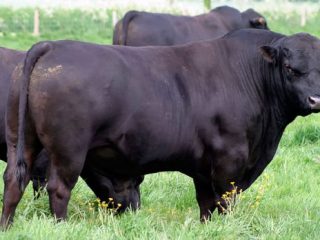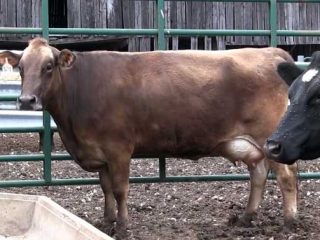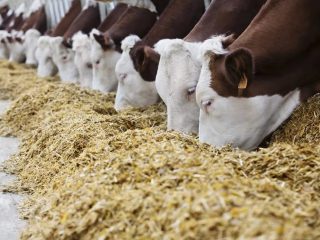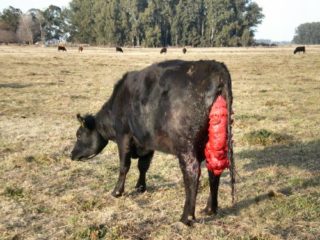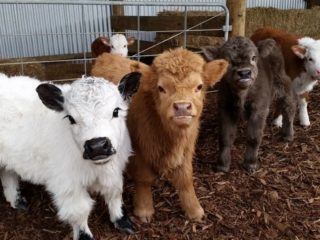Content
If a cow is limping on a hind leg, the reasons can be very different: from a simple sprain, after which the animal can recover on its own, to diseases of the joints and hooves. In most cases, lameness in cows is caused by excessive or abnormal growth of the stratum corneum, which is deformed as a result of lack of movement in winter - during this time the animals move little and the stratum corneum does not grind. In summer, this problem often occurs in cows that are kept on closed farms.
Why does a cow pull a leg and limp
Most often, the cow begins to limp or pull the leg due to various joint diseases, deformation of the stratum corneum and infections in the hoof area. The most common diseases of the legs in cattle include:
- bursitis;
- erosion;
- arthrosis;
- dermatitis;
- arthritis;
- laminitis.
If the stratum corneum on the legs of cows is simply deformed, a simple pruning will correct the situation, however, very often various complications in the form of suppuration and swelling are added to the growths. In this case, the assistance of a veterinarian is required, who must prescribe further treatment. As a first aid after trimming the stratum corneum, you can treat the cut site on the legs of cattle with an antiseptic so as not to aggravate the situation with any infection.
Cows can also limp due to dislocation or stretching - this is one of the easiest options. Sometimes animals do not even need treatment, they quickly recover without assistance. It is much more problematic if the bones of the legs of the cow have shifted from a blow or other mechanical impact. If the cow's legs fail as a result of such injuries, it makes no sense to start treatment - the animal is sent to slaughter.
You can determine if a cow is lame by the following signs:
- the animal moves extremely carefully and stiffly;
- it is difficult for him to get up;
- lethargy, lethargy, refusal to feed is observed;
- the cow may change position frequently to relieve leg pain;
- sometimes, due to incorrect weight distribution, the cow bends too far forward.
Additionally, it is noted that a sick cow has a noticeable decrease in milk yield - from 30% and more. This is caused by loss of appetite, which can lead to complete withdrawal from feed.
Reasons if a cow's leg is swollen above the hoof
Most often, swelling of the legs in cows in the area just above the hooves indicates phlegmon - a disease that manifests itself in inflammation of the corolla of the stratum corneum. It affects the fiber under the skin. The disease is usually caused by some kind of infection. A bruise of an inflamed area can complicate the situation.
Additionally, phlegmon on the legs of cows is determined by the following criteria:
- animal weakness;
- the hoof wall begins to sag;
- the interdigital surface is noticeably swollen.
Bursitis is very dangerous for cows. If the animal not only limps and drags its leg, but also has a noticeable swelling in the area of the joint on the wrist, this may be the beginning of the process of keratinization of this area. In the early stages of the development of bursitis, the animal can still be helped, however, the neglected disease cannot be treated.
Reasons if a cow's leg hurts, where is the hoof
In order to recognize the developing disease in time, at the first signs of lameness in a cow, the legs are examined, especially the hoof area. On a mandatory basis, preventive examinations are carried out in the winter, when the herd moves little and the risk that the animals will begin to limp increases significantly. Due to the lack of movement, the stratum corneum on the legs of cows stops grinding and as a result grows to a significant size so that the edge even begins to bend upwards.
In addition, problems can arise in the soft areas of the hoof, for example, in the small lobe at the bottom and slightly behind the stratum corneum. This area is easily damaged by grazing, and infection can then enter the wound. Ultimately, the animal begins to limp, and when examining the legs and pressing on the damaged area, pain occurs.
In most cases, pain in the hoof area results from the development of fusobacillosis (necrobacillosis). The cow begins to limp and collapse due to the fact that a large crack appears in the heel area where the soft tissues are located. The area around the lesion quickly swells and becomes inflamed, after which the infection moves to the area of the horny shoe and penetrates deeper.
Also, cattle often suffer from leg erosion, when the hooves are formed incorrectly and a redistribution of loads occurs. The pressure is stronger from the outside than from the inside. As a result, the inner soft tissues of the hoof are damaged, the process of decay begins, and the animal limps on the leg.
What to do if a cow is limping on the front or hind leg
If the cow is limping in the hind or front leg even a little, treatment should be started as soon as possible. Even serious diseases of the joints and hooves are curable in the early stages. If the process is started, the cow will eventually have to be sent to the slaughterhouse.
Sometimes, however, treatment is not required at all. First, you need to examine the sore leg - perhaps the animal is limping due to the fact that something is stuck between the joint of the hooves. In this case, it is enough to remove the object and, just in case, disinfect the area of contact with it. If at the same time the cow has a swollen hoof area on the back or front leg, you should contact your veterinarian.
When a cow is limping, and the joint near the hoof is noticeably swollen, before the doctor arrives, you can alleviate the condition of the animal with ichthyol ointment and a bandage. Additionally, you can make an injection "Traumatina".
If the veterinarian has diagnosed that the cow is limping in the hind or front leg due to necrobacteriosis, it is important to isolate the sick individual and provide her with the most comfortable living conditions. Keep the bedding fresh and the floor clean so that the affected leg does not get infected. Treatment is carried out using special foot baths. Additionally, it is necessary to regularly remove dead tissue from the damaged area. In addition, with necrobacteriosis, cattle needs improved nutrition - it is recommended to introduce vitamin supplements into the diet. So, the cow will recover faster and stop limping.
If the disease is accompanied by the release of a large amount of pus, then it is necessary to apply an alcohol compress to the festering area. In some cases, the administration of antibiotics is required.
When a veterinarian diagnoses that a cow is limping due to a sprain, the animal is prescribed rest and temporary isolation from the rest of the herd. A squeezing bandage and cold are applied to the sore leg for 2 days. Then, warming procedures are carried out. Usually this is enough, and soon the sick individual stops limping.
In case of erosion on the legs of cattle, you must first clean the stratum corneum from dirt and treat it with an antiseptic. In the presence of purulent ulcers, antiseptic ointments should be applied to them. Further treatment involves attaching a special heel to the hoof.
If there is inflammation on the legs of a sick animal with the formation of pus, treatment always begins with opening the affected cavity. Then it is cleaned, washed with hydrogen peroxide or potassium permanganate and made a cotton turunda. It is abundantly soaked in Vishnevsky's ointment, after which cotton wool is attached to the wound.
Prevention of lameness
Treatment of cattle is often associated with high financial costs, so it is easier to prevent diseases of the joints and hooves. This is achieved through simple preventive measures:
- it is necessary to provide the cows with sanitary conditions - the bedding is changed in a timely manner, and the stalls are cleaned;
- the hoof area is inspected from time to time, checked for moisture levels and cleaned;
- periodically, the horny layer of the hoof must be cut off if it grows too much;
- cattle feed is of high quality, preferably with vitamin supplements (prevention of bursitis);
- the floor surface should ideally be covered with rubber mats;
- sometimes it is necessary to make special baths for cattle hooves (a solution of 10% zinc is suitable as filling once every 10 days, which is poured 25 cm in height).
Conclusion
If a cow is limping on its hind leg, it is necessary to urgently consult a veterinarian, as there can be many reasons for this phenomenon. Self-diagnosis is complicated by the fact that the symptoms of many diseases of the legs and joints in cows are very similar. The wrong course of treatment can only harm the sick animal. On the other hand, if the disease is started and the treatment is delayed, full recovery may not be possible. In this case, the sick cow is sent to slaughter.
For more information on what to do if a cow has a swollen leg and is limping, see the video below:
